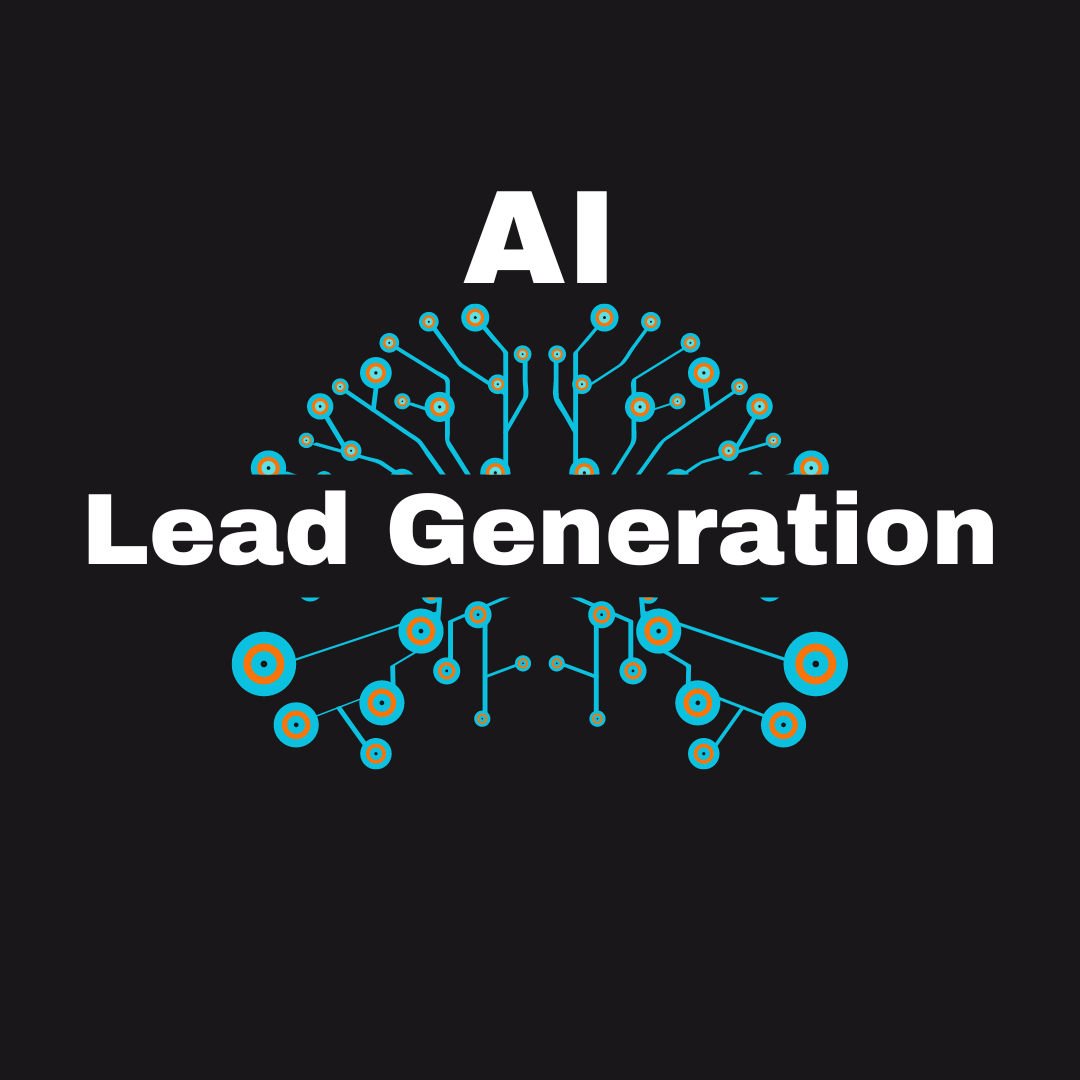How Predictive Analytics Identifies High-Value Leads
Key Takeaways
- Predictive analytics uses data from many sources to score leads based on how likely they are to buy
- Machine learning helps find patterns in past customer data to predict future buyers
- Lead scoring automation helps sales teams focus on the best leads first
- Behavioral tracking shows which leads are most interested right now
- Customer lifetime value predictions help prioritize leads that will bring the most money over time
- AI can group leads into hot, warm, and cold categories for better follow-up planning
- Real-time insights tell sales teams the best time and way to contact each lead
Have you ever wondered how some companies seem to know exactly who wants to buy from them? Thats not magic – it’s predictive analytics. I’ve spent the last 12 years helping businesses use smart computer systems to find their best leads. Let me show you how this actually works in real life.
Data Collection and Analysis for Predictive Lead Scoring
At the heart of predictive lead finding is data – lots and lots of data. Think of it like detective work where you gather clues from everywhere possible.
Predictive systems pull information from many different places:
- Customer databases (CRMs)
- Website visitor tracking
- Email campaign results
- Social media activity
- Company information databases
A client of mine in manufacturing started collecting data from these sources and discovered that people who downloaded certain technical guides were 4 times more likely to buy their products. Before predictive analytics, they had no idea this pattern existed!
The real power comes from combining all these different data sources. When you connect website behavior with email opens and social media engagement, you start seeing the full picture of each potential customer. AI email outreach platforms can automatically track how people interact with your messages and feed this data into your predictive system.
One important thing I tell my clients: data quality matters more than quantity. I worked with a software company that had thousands of leads but couldn’t figure out why their conversion rate was so low. We cleaned their data and found that 40% of their contact information was wrong or outdated! Once fixed, their predictive models became much more accurate.

How AI Algorithms Transform Lead Data Into Insights
The magic of predictive analytics happens when AI looks at your data and finds patterns that humans would miss. These computer programs are really good at spotting connections between different pieces of information.
AI uses several cool tricks to analyze your leads:
- Pattern Recognition: The system looks at all your past customers and finds common traits they shared before buying.
- Correlation Analysis: It figures out which behaviors and characteristics most strongly connect to purchases.
- Anomaly Detection: It can spot unusual patterns that might indicate a highly interested prospect.
I once helped a financial services firm implement predictive analytics, and the system found that companies who visited specific calculator pages on their website then came back within 48 hours were 5x more likely to become customers. Their sales team had never noticed this pattern before!
The best part is that these systems get smarter over time. As more data comes in about which leads converted and which didn’t, the AI adjusts its calculations. This is called machine learning, and it makes AI-powered lead generation more accurate with each passing week.
Custom algorithms can be built specifically for your business model. For example, a B2B software company with a 9-month sales cycle needs different predictive factors than an e-commerce site with impulse purchases. I’ve built custom models for both types of businesses, and the key is understanding which signals matter most for your specific situation.
Automated Lead Scoring Systems
After collecting data and running it through AI algorithms, predictive analytics gives each lead a score. Think of it like grades in school – A, B, C, etc. – but for how likely someone is to buy from you.
The best lead scoring systems look at four main things:
- Demographic Fit: Does this person match your ideal customer profile?
- Company Fit: (For B2B) Is this company in your target market?
- Behavior Signals: How has this person interacted with your content?
- Intent Data: Are they actively researching solutions like yours?
For example, a manufacturing client of mine used AI lead scoring to rank their prospects. A VP of Operations from a mid-size company in their target industry who downloaded a product guide and visited the pricing page scored 92/100. A student who just signed up for their newsletter scored 12/100. This helped them focus on the right leads first.
I’ve seen companies increase their conversion rates by 300% simply by having their sales teams start with the highest-scored leads each day rather than working through contacts alphabetically (yes, some companies still do this!).
The real power comes when scoring happens automatically and in real-time. When a new lead comes in from your website, they get scored instantly based on all available data. If they later open your email or visit your pricing page, their score updates automatically.
Here’s a simple breakdown of how a basic lead scoring model might work:
| Factor | Points |
|---|---|
| Title matches ideal buyer | +20 |
| Company in target industry | +15 |
| Visited pricing page | +30 |
| Downloaded case study | +25 |
| Opened email recently | +10 |
| Company too small | -15 |
| Inactive for 30+ days | -20 |
While basic systems use fixed points like this, advanced predictive scoring uses AI to weight factors differently based on your specific business and constantly adjusts these weights as patterns change.
Behavioral Analysis and Intent Prediction
What people do tells you more about their buying plans than what they say. Predictive analytics watches how leads behave to spot buying signals.
Here are behaviors that often show strong buying intent:
- Visiting your pricing page multiple times
- Looking at comparison pages between your product and competitors
- Reading case studies or success stories
- Watching product demo videos
- Checking out implementation or onboarding information
A healthcare software company I worked with found that prospects who visited their integration page (showing how their product connected with other systems) were nearly ready to buy. They hadn’t realized this was such a strong signal until predictive analytics pointed it out.
The timing and sequence of these actions matter too. AI-driven lead nurturing strategies can track not just what pages someone visited, but in what order and how much time they spent on each. This creates a “digital body language” profile that predicts their buying stage.
I always tell my clients that recency matters a lot. A lead who showed interest six months ago but hasn’t returned is very different from one who’s been active in the past week. Good predictive systems heavily weight recent behaviors.
Advanced systems can even track content engagement depth – did someone just skim your whitepaper or did they read the whole thing? Did they rewatch specific parts of your product video? These detailed behavioral signals provide amazing insight into a lead’s level of interest.
Lifetime Value Forecasting and Lead Prioritization
Not all customers are worth the same to your business. Some might make one small purchase while others become loyal buyers for years. Predictive analytics helps you find those potential high-value long-term customers.
Customer Lifetime Value (LTV) prediction looks at:
- Typical purchase amounts in specific industries or segments
- Upsell and cross-sell patterns from similar customers
- Renewal and retention rates for subscription businesses
- Referral behaviors that bring in additional customers
A retail client discovered through LTV analysis that customers who started with a specific product category typically spent 4.7x more over three years than average customers. This completely changed which leads they prioritized.
The real breakthrough happens when you combine conversion likelihood with value prediction. Some leads might be easy to convert but bring little value. Others might be harder to win but become major revenue sources. The best lead qualification processes consider both factors.
I recommend creating a simple matrix to visualize this concept:
| Low Value | High Value | |
|---|---|---|
| High Conversion Chance | Quick Wins | Dream Leads |
| Low Conversion Chance | Low Priority | Worth Effort |
For example, a financial services company I worked with used predictive analytics to identify small businesses with high growth trajectories. While these weren’t their largest leads today, the system predicted they would become valuable long-term clients. They created a special nurturing program just for these “future stars.”
The beauty of AI-powered systems is they can identify subtle indicators of future high value that humans might miss, like industry growth trends, hiring patterns, or funding rounds for B2B customers.
AI-Powered Lead Segmentation Strategies
Once predictive analytics has scored and valued your leads, it can automatically sort them into groups for different treatment. This is way more effective than treating all leads the same way.
Typical lead segments include:
- Hot Leads: High scores, showing buying intent, ready for direct sales contact
- Warm Leads: Interested but not ready to buy, need nurturing content
- Cold Leads: Low engagement, require awareness content or re-engagement campaigns
- High-Value Targets: Strategic accounts worth special attention regardless of current interest
One tech company I advised used AI chatbots with different conversation flows based on the predictive segment of each website visitor. Hot leads were quickly connected to sales reps, while warm leads received helpful content and gentle nurturing. This personalized approach doubled their conversion rate.
The most advanced segmentation goes beyond just hot/warm/cold to create micro-segments based on specific needs and interests. For example, a marketing software company identified these segments through predictive analytics:
- Growth-focused SMBs needing scalable solutions
- Enterprise clients concerned with integration capabilities
- Analytics-driven marketers focused on measurement features
- Creative marketers more interested in design capabilities
Each segment received completely different marketing messages and sales approaches, dramatically improving relevance and response rates.
Dynamic segmentation is another powerful capability – leads can automatically move between segments as their behavior and scores change. This ensures they always receive the most appropriate communication at each stage of their journey.
Implementing Predictive Analytics in Your Business
Ready to use predictive analytics for your own lead generation? Here’s how to get started based on my experience implementing these systems for dozens of companies.
First, assess your current data situation:
- Do you have clean, organized customer and lead data?
- Are you tracking website behavior and marketing campaign interactions?
- Do you have enough historical data on which leads converted and which didn’t?
If your data isn’t ready, start there. I’ve seen too many companies invest in fancy AI tools before their data was good enough to make them work.
Next, consider the right approach for your business size:
For smaller businesses:
- Start with built-in predictive features in your existing CRM or marketing platform
- Consider easy-to-implement AI lead generation tools that don’t require data science expertise
- Focus on collecting better data while using simpler scoring models
For mid-size and enterprise businesses:
- Evaluate dedicated predictive analytics platforms
- Consider whether you need custom model development
- Plan integration between your predictive system and sales/marketing tools
- Think about staffing needs (data analysts or data scientists)
Implementation steps typically include:
- Data preparation: Cleaning and organizing your customer and lead data
- Historical analysis: Analyzing past leads to identify conversion patterns
- Model development: Creating scoring algorithms based on your specific business
- Integration: Connecting the predictive system with your sales and marketing tools
- Training: Teaching your team how to use predictive insights
- Optimization: Continuously improving the system based on results
I helped a B2B software company implement predictive analytics last year, and their process took about 3 months from start to finish. The biggest challenge wasn’t technical – it was getting their sales team to trust and use the scores. We solved this by showing them early wins and involving them in defining what made a good lead.
The best implementations start small, prove value, and then expand. You might begin with predicting which leads are most likely to convert, then add lifetime value prediction later, and finally implement automated segmentation and personalization.

Frequently Asked Questions
How accurate is predictive lead scoring?
Good predictive lead scoring systems typically identify the top 10-20% of leads that will generate 50-80% of your conversions. Accuracy varies by industry and data quality, but I’ve seen companies achieve 70-85% accuracy in identifying high-value leads. The key is having enough historical data and regularly retraining your models as new information comes in.
Do I need a data scientist to implement predictive analytics?
Not necessarily. Many modern CRMs and marketing platforms now include predictive features that work “out of the box.” For small to mid-sized businesses, these built-in tools often provide good results without requiring data science expertise. Enterprise-level companies with complex sales processes may benefit from custom models developed by data scientists.
How much historical data do I need for predictive analytics to work?
As a general rule, you need data on at least 100 converted customers and several hundred non-converted leads to build basic predictive models. More data will give you better results. If you don’t have enough historical data yet, start collecting it properly now while using simpler lead scoring approaches until you have sufficient information.
Will predictive analytics replace my sales team?
Absolutely not. Predictive analytics is a tool that makes your sales team more effective by helping them focus on the right leads at the right time. The human touch remains essential for building relationships, understanding complex needs, and closing deals. The best results come from humans and AI working together.
How can small businesses with limited budgets use predictive analytics?
Start with the predictive features in tools you already use, like your CRM or email marketing platform. Many affordable options exist today. Focus on collecting good data and implementing basic lead scoring first. As you grow, you can invest in more sophisticated solutions. Even simple predictive approaches are better than no prioritization at all.
How long does it take to implement predictive lead scoring?
Implementation timelines vary widely depending on your data readiness and the complexity of your sales process. Simple implementations using built-in tools can take as little as a few weeks. Custom enterprise solutions might take 3-6 months to fully deploy. The most important factor is data preparation, which often takes longer than expected.
How can I tell if my predictive analytics system is working?
Track these key metrics before and after implementation:
- Conversion rate of leads tagged as high-quality
- Time spent by sales on non-converting leads
- Average deal size and sales cycle length
- Overall lead-to-customer conversion rate
- Revenue per sales rep
I recommend establishing a baseline for at least a month before implementation so you can measure the impact accurately.
